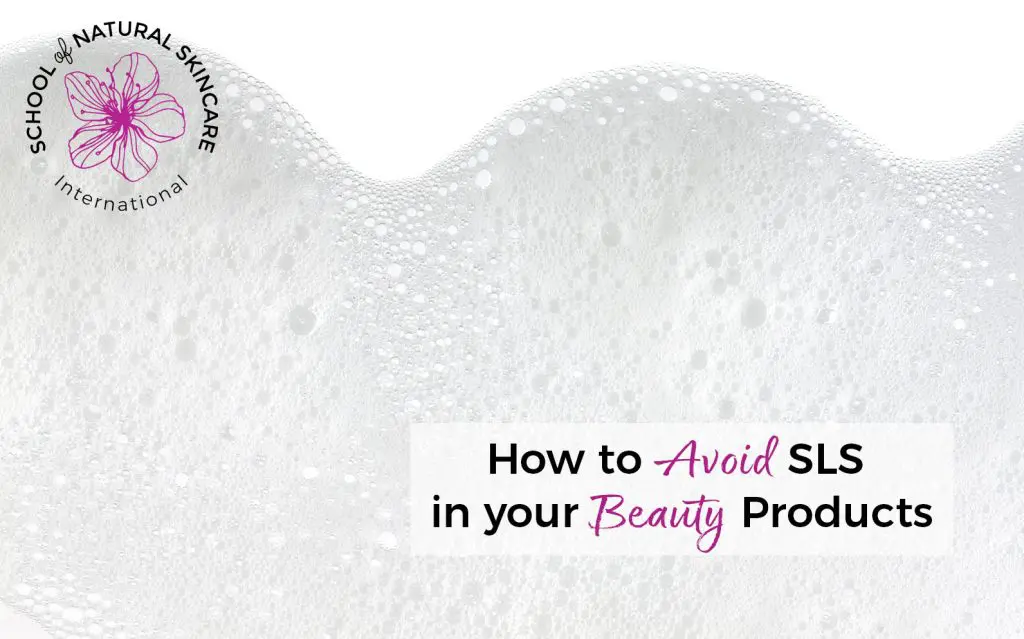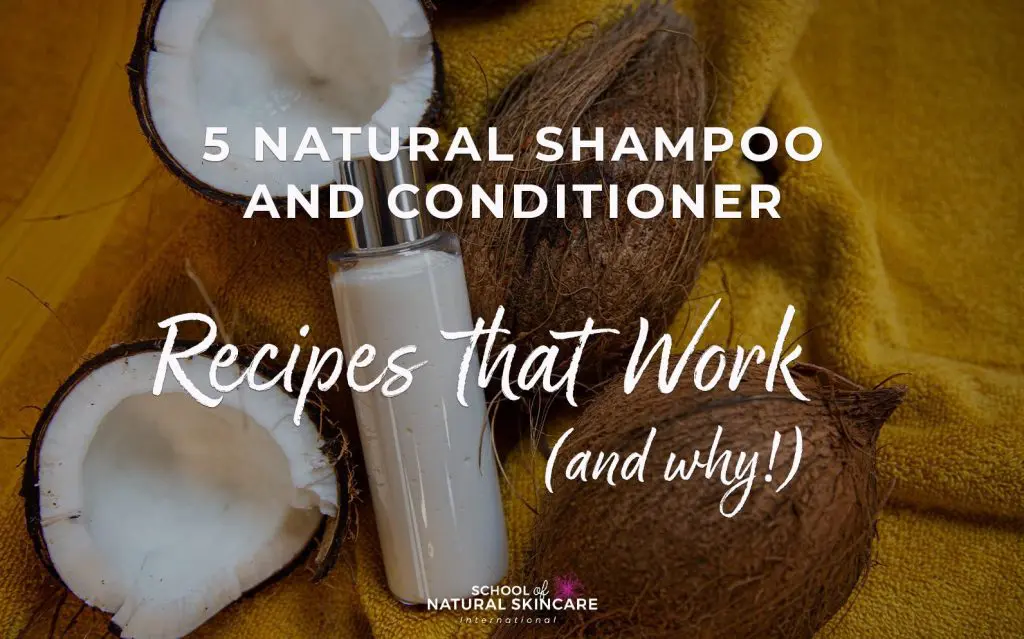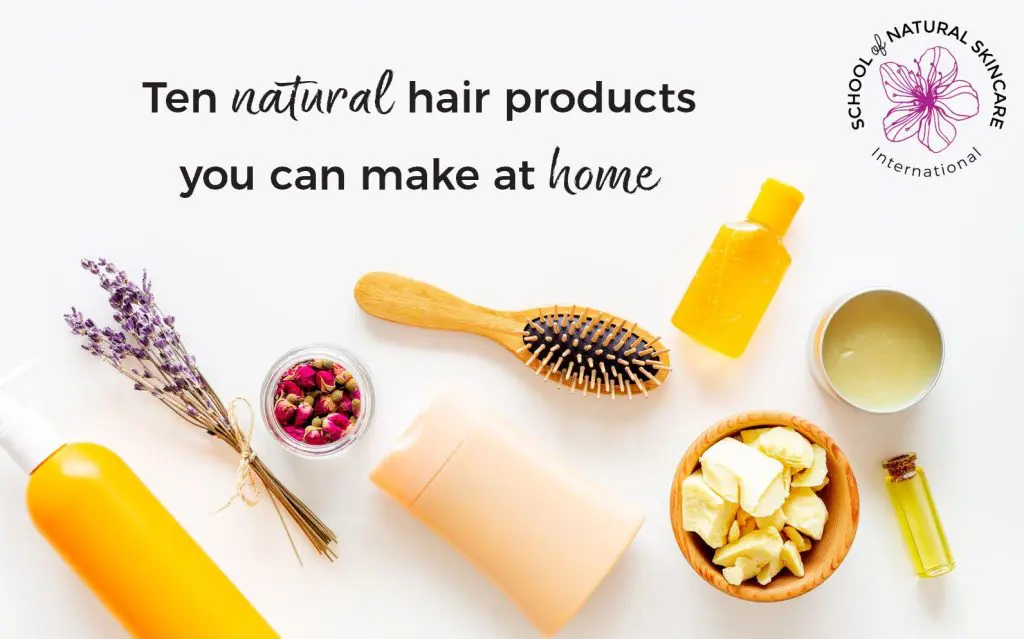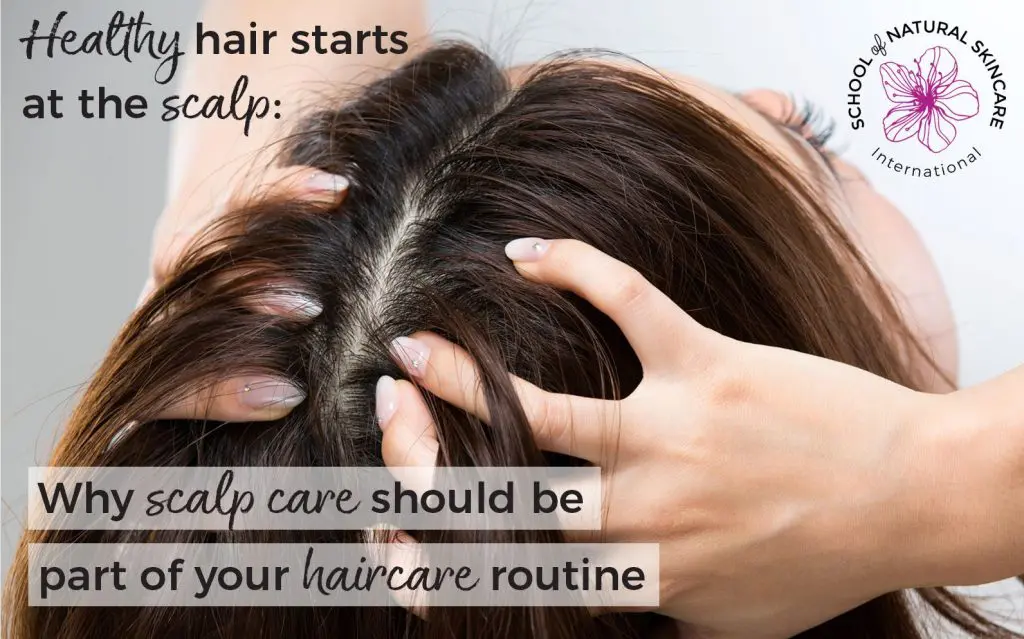Whether you’re buying natural beauty products or looking to formulate your own, you probably want to put only the very best, most effective, natural ingredients on your skin, hair, and face. And if you’re at all interested in natural beauty products, chances are you’ve heard of SLS (and are probably looking to avoid it.)
SLS stands for Sodium Lauryl Sulfate, and you may have even read about why it’s one of the top ingredients to detox from your skincare and haircare routine, although you might not know what it is, or why to avoid it. As a type of surfactant—or surface active agent—SLS serves the function of reducing the surface tension between the oil and the water ingredients in a product. It is the surfactants in things like shampoo or a body wash which allows the product to produce foam, disperse ingredients, attach to the dirt and debris on the skin and hair and carry it away in the rinse.
Although SLS is a strong and effective detergent, it’s often one of the most (if not the most) harsh and irritating surfactants out there. Studies have shown that it damages the acid mantle of the skin, the protective outer barrier created by our body’s natural oils and sebum. For many hair types, too, it may be too drying and damaging, even if softening butters and oils are included in the product’s ingredient list. The damage may not be immediate, but over time, it will show up.
The good news is that there are many alternatives to SLS, ones you can find on the shelf, if you know how to look for them, as well as ones you can use in making your own products.
So, what can you use instead?
Buying Haircare + Beauty Products: A Closer Look at the Labels
If you’re just looking to avoid SLS in your off-the-shelf products, learning how to find it on a beauty label is a bit of an art as well as a science.

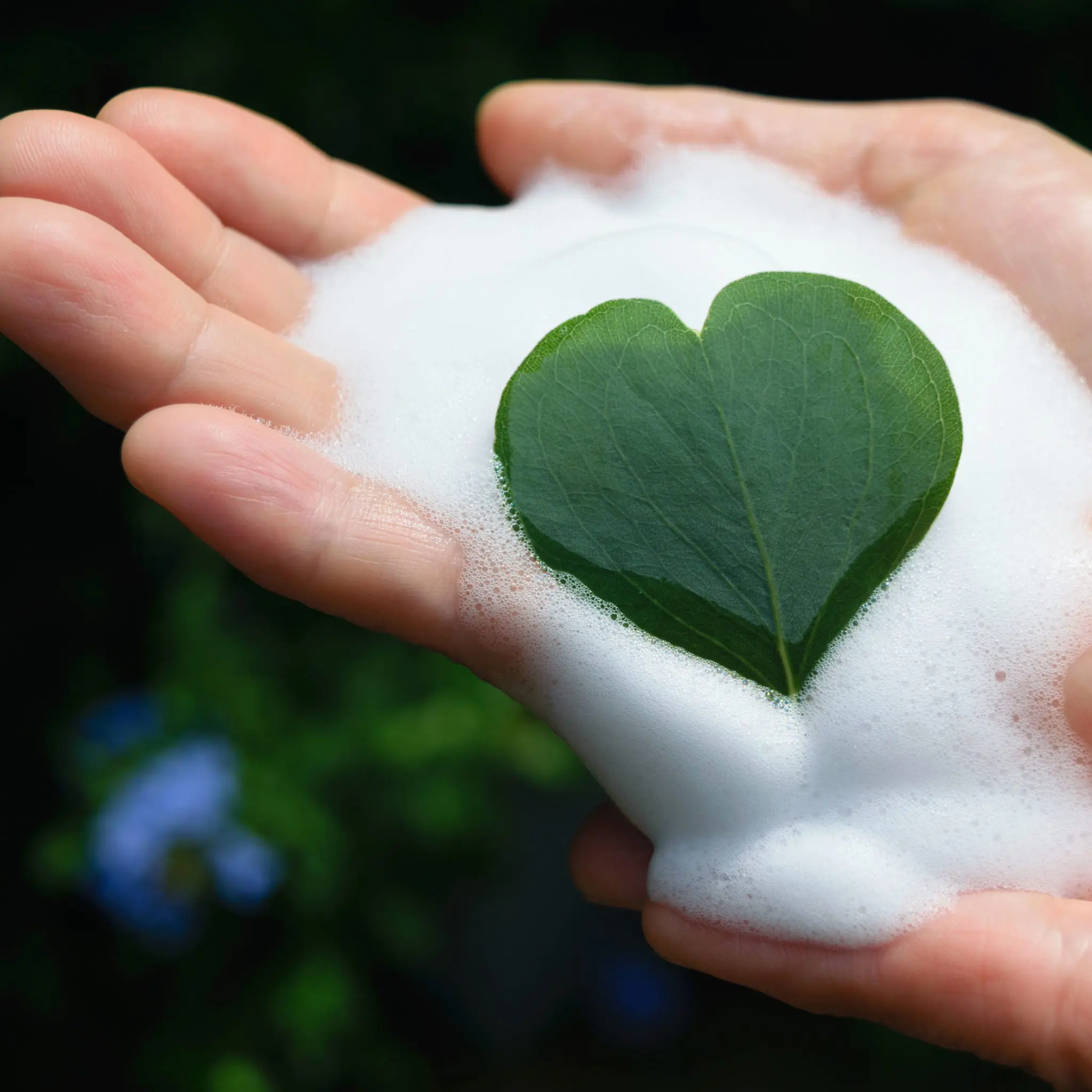
There are many chemical-sounding ingredients that show up on a label that might sound dangerous or strange, especially as you’re just starting out with choosing natural products. The old adage of “It’s not safe if you can’t pronounce it” isn’t a great way to vet things.
The truth is, everything is made up of chemicals—water, soil, plants, our pets, and even us! We all say we want to avoid “chemicals,” but what we really mean is we want to avoid ingredients that are harsh or harmful. And so it’s not chemicals themselves which are dangerous or unnatural. It’s what the ingredients are, and what they do, that you should understand, so you can make the safest and healthiest choice for you!
When it comes to SLS, most common versions of it are manufactured with petroleum. However, some variations of it are manufactured with vegetable ingredients, such as palm oil and coconut oil. It may come as a surprise that these coconut-derived variants on SLS are still permitted in many reputable organic standards, such as Ecocert and the Cosmetic Organic and Natural Standard, or COSMOS.
Although these vegetable-derived ingredients may seem better because of their natural source, they are so heavily processed and altered that they’re only barely ‘natural’ any longer. Likewise, with palm-derived SLS, there’s a wealth of information available about the destructive palm-oil industry, and eco-conscious consumers may wish to avoid these ingredients for this reason as well.
SLS can be listed as sodium lauryl sulfate (SLS) as well as sodium dodecyl sulfate. It can also show up as sodium alkyl sulfate (SAS).
Another sulfate which is similar to SLS is ALS, or ammonium laureth sulfate. Since it is a bigger molecule than SLS, it can’t penetrate the skin as readily as SLS can, that’s why it is less irritating than SLS. But it can still cause dryness and irritation, especially on sensitive skin, and can be very drying for hair.
Some safer alternatives you can look for in your products include SLSA (sodium lauryl sulfoacetate), Sodium Cocoyl Glycinate, Disodium / Sodium Cocoyl Glutamate, Decyl glucoside, and Lauryl glucoside.
Formulating Haircare + Beauty Products: Natural Alternatives
For those of you who are formulating your own beauty products, you may already be aware that surfactants are the essential ingredient you must include when formulating a shampoo, or any other beauty cleanser that foams.
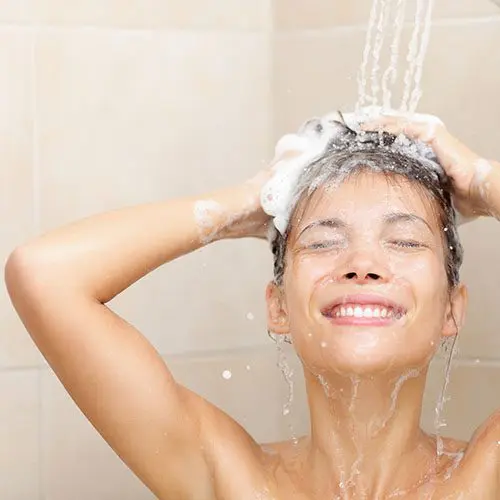
SLS is not the only surfactant choice available to you! If we focus on Ecocert approved alternatives, we can choose from others including:
- SLSA (sodium lauryl sulfoacetate)
- Sodium Cocoyl Glycinate
- SCS (Sodium Coco Sulfate)
- Disodium / Sodium Cocoyl Glutamate
- Decyl glucoside
- Lauryl glucoside.
A very popular alternative is Sodium Coco Sulfate (or SCS), which is also approved by many certification bodies. What consumers (and many formulators!) don’t know however, is that SCS contains about 50% of SLS.
You see, SLS is one single molecule—sodium salt of lauric acid (a fatty acid from coconut) that also reacts with sulfuric acid to create a sulfate. SCS, on the other hand, is a mixture of sodium salts of all of the fatty acids that are present in coconut oil (and coconut oil contains about 50% lauric acid) that also reacted with sulfuric acid to create sulfate. To put it in other words—the production method (chemical part) is exactly the same for both surfactants. The only difference is the starting material. For SLS that is lauric acid only (a component of coconut oil), for SCS the starting material is coconut oil as a whole. That being said, the presence of other fatty acids makes SCS slightly less irritating than pure SLS.
When it comes down to it, choosing a natural surfactant really can be almost a philosophical question—what does ‘natural’ mean for you? Some alternatives are naturally-derived up to a certain percentage, but then undergo big chemical changes to become surfactants. More and more so-called ‘green’ surfactants are available every day, but the choice of not-so-green ones is still bigger; many surfactants, even new ones, still contain all sorts of ethoxylated molecules, PEGs, and so forth.
Free Training
Become a Natural Haircare Formulator
There are so many myths and mistakes online about haircare formulation—many of which can actually damage your hair.
Learn the professional way to formulate natural and organic haircare products with our free email training series.
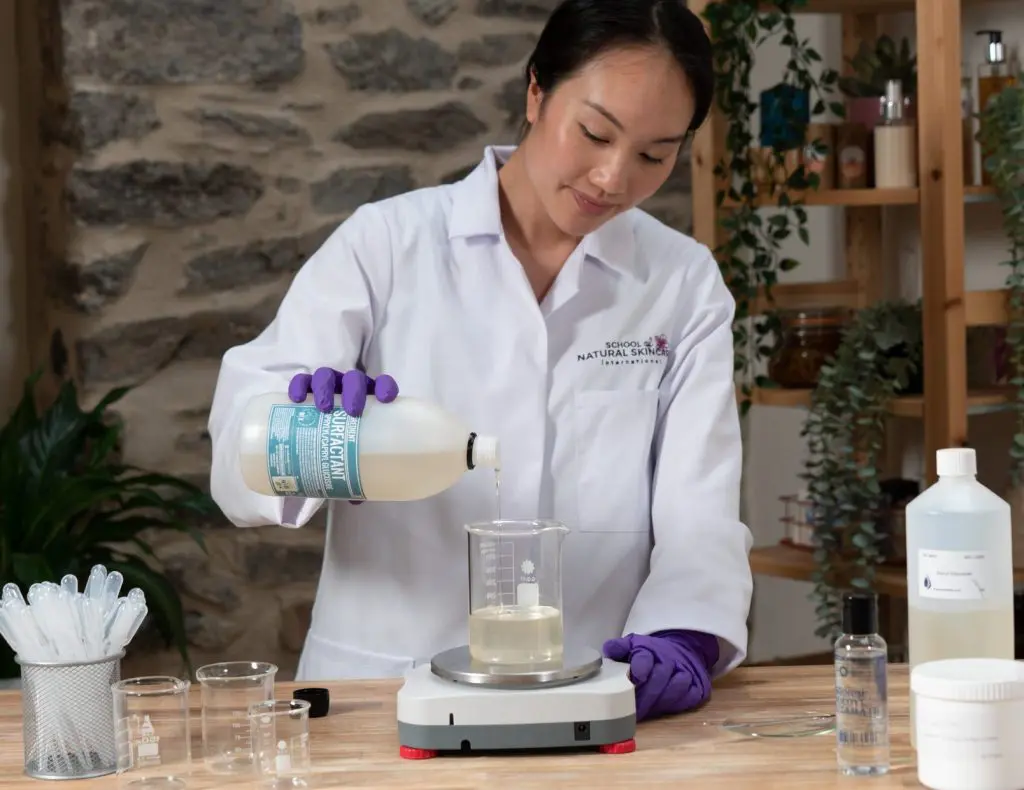
Exclusive for our newsletter subscribers. Sign up now!
We look after your data in accordance with our privacy policy.
What you’ll learn:
- The essential ingredient you must include in a shampoo.
- Five natural shampoo recipes that won’t work and why.
- How to avoid SLS – and gentle, natural alternatives.
- The difference between making haircare products and skincare products.
- How NOT to make your own shampoo and conditioner bars.
Exclusive for our newsletter subscribers. Sign up now!
Source:
L. Rhein, 2007, C.3 – Surfactant Action on Skin and Hair: Cleansing and Skin Reactivity Mechanisms.
